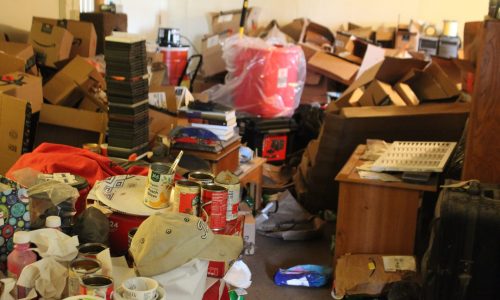
Hoarding Remediation
In the United States and most other parts of the world, a person has a right to live how they want and in the conditions they want until it harms them or others. Whether you are in or know someone in a hoarding situation we can help. To safely remove items, donate what is salvageable and bring home to a livable environment again.
Hoarding remediation refers to the process of cleaning, organizing, and restoring a living space that has been severely affected by hoarding disorder. Hoarding disorder is a mental health condition characterized by the excessive accumulation of possessions, resulting in cluttered and unsanitary living conditions that can pose various health and safety risks.
The goal of hoarding remediation is to restore the living space to a safe, functional, and habitable condition while addressing the underlying issues associated with hoarding disorder. Here are the general steps involved in hoarding remediation:
1. Assessment and planning: A professional hoarding cleanup team assesses the extent of clutter and the condition of the living space. They work closely with the individual affected by hoarding disorder to understand their specific needs, concerns, and goals. A detailed plan is developed to address the clutter and implement effective cleaning and organizing strategies.
2. Compassionate approach: Hoarding remediation requires a compassionate and non-judgmental approach. The cleanup team works sensitively with the hoarder to build trust, establish open communication, and ensure their involvement and consent throughout the process.
3. Sorting and categorizing: The cluttered items are sorted into different categories, such as keep, donate, recycle, or discard. The hoarder is actively involved in the decision-making process to determine the fate of their possessions.
4. Cleaning and sanitization: The living space is thoroughly cleaned and sanitized. This includes removing dust, dirt, and debris, as well as addressing any mold, mildew, or pest infestations that may have developed due to the hoarding conditions. Special attention is given to areas that may require deep cleaning, such as floors, surfaces, and ventilation systems.
5. Organizing and storage solutions: After the cleaning process, the remaining possessions are organized in a systematic and functional manner. The cleanup team may recommend appropriate storage solutions and provide guidance on maintaining an organized living space.
6. Follow-up support: Hoarding remediation is an ongoing process, and individuals affected by hoarding disorder may require ongoing support and assistance. The cleanup team may collaborate with mental health professionals, support groups, or social services to provide necessary resources and support for the hoarder’s long-term recovery.
Hoarding remediation is a complex and challenging process that requires a multidisciplinary approach. It involves collaboration between hoarding cleanup specialists, mental health professionals, and support systems to address the underlying issues and promote lasting change in the individual’s living environment and well-being.
520-888-7563
